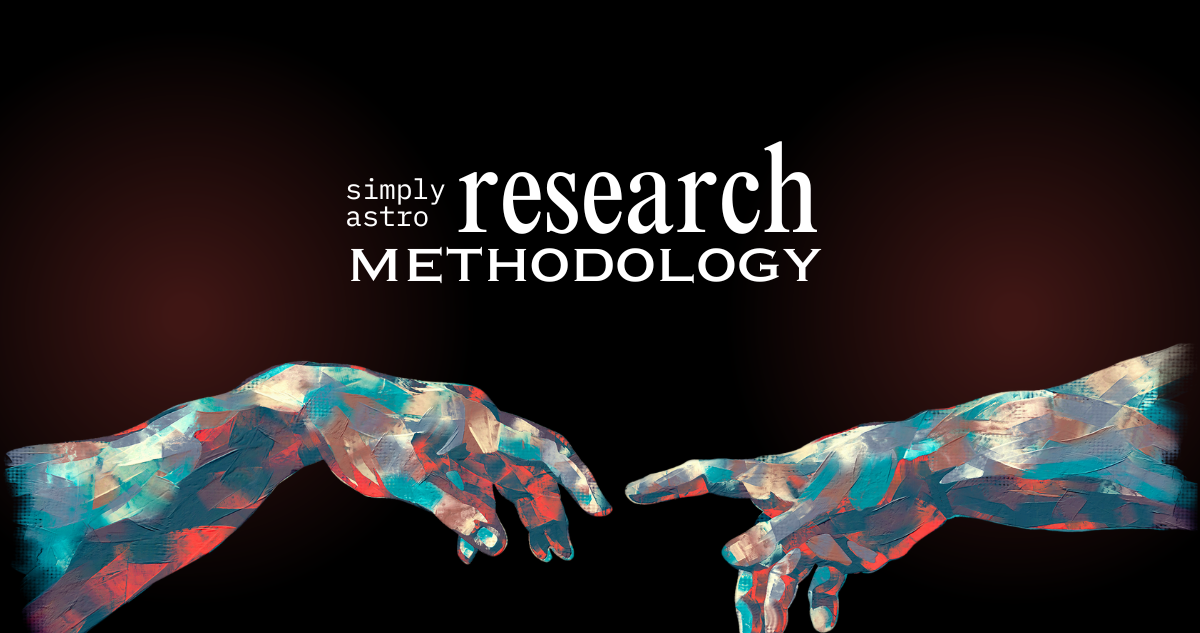Introduction to Our Research Methodology

In this post, we aim to provide a comprehensive overview of the methodologies that underpin our research.
Our approach is rooted in a rigorous, data-driven analysis of numerology and astrology. We believe in presenting our findings without bias, relying solely on the data and the systems we use.
Understanding these systems is crucial for appreciating the depth and significance of our research.
Numerology System
At the core of our numerological analysis is the numerology system. This system distinguishes itself in several key ways:
- Life Path Number Calculation:
- The numerology system we use does not recognize a life path number 2; instead, it treats life path 2 as life path 11. Similarly, a life path 20 is also considered as 11 before reducing.
- Master Numbers:
- In our system, only 11, 22, and 33 are acknowledged as master numbers. We do not consider 44, and 55 as master numbers due to the relatively lower occurrence of notable figures in society with these life path numbers.
- Compound Life Path Number:
- Our calculation method involves adding the digits of a birth date as follows: M+M+D+D+Y+Y+Y+Y = AA. This sum, AA, is termed the 'compound life path number,' a concept unique to our system. It is then reduced to a single digit to derive the 'life path number'.
- Special Cases in Calculation:
- If the date or month in a birth date is 11 or 22, we do not reduce these numbers. For instance, for the date 22/11/2001, we calculate the compound number as 22+11+2+0+0+1 = 36, then reduce it to 3+6 = 9, making 9 the life path number rather than 2+2+1+1+2+0+0+1 to get 9.
- If after adding the date of birth we get 11, 22, or 33 we do not reduce it to 2, 4, and 6 respectively. 11, 22, and 33 are master numbers and should not be reduced.
- Partial Energy and Day Born Date:
- We also consider the 'day born date,' which is the day of the month a person was born. This is referred to as 'partial energy.' For example, someone born on 22nd November would have a day born date or a partial energy of 22.
- Universal Day and Universal Year:
- We differentiate between 'lifepath' for people and 'universal day' for events or dates.
- Another concept is Universal Years. For example, 2023 is 7 universal year (2+0+2+3 = 7).
- Month + Date Number:
- We also analyze the 'Month + Date number,' for example, for the date 22/9/2007, we add 22+9 = 31, which can be further reduced to 4 (3+1).
- Personal Year Start:
- A unique aspect of our system is the belief that personal years start on one's birthday, rather than the New Year, which is why it's called PERSONAL and not UNIVERSAL.
This methodology sets the foundation for our numerological research, allowing us to explore correlations with a unique perspective.
Analyzing Compound Universal Day Occurrence
In our analysis of compound universal days, we go beyond simply looking at their raw counts. We recognize that the occurrence of these days can vary significantly across different time periods.
For instance, the presence of 1 and 9 at the beginning of years in the 1900s results in a higher minimum compound universal day compared to the 2000s. This difference in distribution can potentially skew the analysis if not accounted for.
Therefore, we take a more nuanced approach by examining the percentage occurrence of each compound universal day within the specific timeframe of our data.
This allows us to identify compound days that are overrepresented in our dataset compared to their general occurrence. Such overrepresentation can be particularly significant when it involves compound days that are inherently rare
For example, if a compound universal day like 61, which occurred only once in the entire 20th century, appears multiple times in our data, it would be considered highly significant.
This is because despite its low overall occurrence, it is showing up more frequently than expected in our specific dataset.
This targeted approach helps us identify potentially meaningful patterns and correlations while minimizing the impact of differing distributions across broader timeframes.
While analyzing data from the last 100 years, the 1900s, and the 2000s can provide valuable context, focusing on the occurrence within the specific timeframe of our study offers a more precise and relevant analysis.
This is because it allows us to directly compare the frequency of each compound universal day in our dataset to its expected occurrence within the same period, revealing potential overrepresentation and significant correlations.
By employing this methodology, we aim to uncover hidden patterns and connections between compound universal days and the events we are studying, offering deeper insights and prompting further investigation.
Western Astrology in Our Research
Moving on to our approach in Western astrology, we maintain a specific and targeted methodology, aimed at providing clear and reliable insights. Our focus is on the aspects of astrology that offer the most accessible and dependable data for analysis.
Primary Focus on Sun Signs
- Sun Signs:
- The cornerstone of our astrological analysis is the sun sign. This is the zodiac sign where the sun was positioned at the time of a person's birth. The sun sign is a fundamental aspect of an individual's astrological profile and is widely recognized for its influence on personality and life events.
- Sun Signs by Month:
- We take our analysis a step further by distinguishing sun signs based on the month of birth. For instance, a Capricorn born in December might exhibit different traits and tendencies compared to a Capricorn born in January. This distinction allows for a more nuanced understanding of the sun sign's influence.
Limited Use of Moon Signs and Ascendants
- Selective Use of Moon Signs and Ascendants:
- While moon signs and ascendants can offer deeper insights, their use in our research is limited. The necessity for precise birth time and location data, often unavailable or unreliable for many individuals, restricts the accuracy of these elements. Therefore, unless specific and accurate birth data is provided, our focus remains predominantly on sun signs.
Incorporating Day of the Week
- Day of the Week Analysis:
- Another facet of our astrological approach is the consideration of the day of the week on which an individual was born. Days like Monday, Tuesday, etc., are considered for their traditional astrological associations and potential influence on personality and life events.
Elements and Modalities
- Zodiac Elements and Modalities:
- We occasionally integrate the analysis of zodiac elements (air, fire, water, earth) and modalities (cardinal, fixed, mutable) into our research. These characteristics can provide additional layers of understanding about an individual's astrological profile.
Chinese Astrology in Our Research
In the context of our research, we also incorporate elements of Chinese astrology, with some distinct adaptations to better align with our observations and data. Our approach is more closely related to the Vietnamese zodiac system, though we refer to it as Chinese astrology for its broader recognition.
12 Zodiac Animal System with Adaptations
- Zodiac Animals:
- Our system is based on the traditional 12 zodiac animal cycle. However, we have made specific adaptations to more accurately reflect the characteristics we observe in people born under these signs.
- We use Ox instead of Buffalo, Cat instead of Rabbit, Goat instead of Sheep, and Pig instead of Boar. These substitutions are not arbitrary but are based on our findings that individuals born in these years exhibit traits more closely aligned with these animals.
Clarification on Terminology
- Chinese vs. Vietnamese Astrology:
- It's important to note that while we refer to our system as Chinese astrology, it aligns more closely with the Vietnamese interpretation of the zodiac animals. We choose to use the term 'Chinese astrology' due to its more widespread recognition and understanding.
- The use of Cat instead of Rabbit, for example, is a notable feature of Vietnamese astrology. We find that this adaptation, along with others, offers a more accurate reflection of the characteristics and traits associated with each year.
Data Collection and Analysis
Primary Sources of Data Collection
Our research at simplyastro.org primarily relies on data sourced from Wikipedia, a comprehensive and publicly accessible database. This approach allows us to gather a wide array of information pertinent to our studies in astrology and numerology. When we collect data directly from individuals or use other websites, we ensure to explicitly mention these sources. This transparency is key to maintaining the credibility and reliability of our research.
Analytical Techniques
The analytical methods we employ have been perfected over time, tailored specifically for our unique approach to numerological and astrological analysis. Our team focuses on precise calculations to ensure that every detail in our data is accurately represented and interpreted. This meticulousness is crucial, given the complex nature of the data we deal with.
Presentation of Data
In presenting our findings, we predominantly use bar charts to illustrate the data clearly and effectively. These charts are chosen for their ability to communicate trends and comparisons in an easily digestible format. Occasionally, we also employ pie charts and other graphical formats to provide varied perspectives and enhance the visual appeal of our data presentation.
Updates and Revisions
In the dynamic field of astrological and numerological research, methodologies and interpretations are subject to evolution and refinement. At simplyastro.org, we embrace this fluidity as a crucial aspect of our commitment to accuracy and relevance.
Adapting to New and Improved Data
Our research is continually influenced by the availability and quality of data. When we encounter datasets that are larger, more credible, or contain more comprehensive information, we see an opportunity for refinement.
- Revisiting Studies: Should more updated or relevant data become available, we are open to re-conducting our studies. This practice is not just about updating our data; it's about ensuring that our conclusions and insights remain as accurate and informative as possible.
- Presenting Updated Findings: Any significant updates to our studies will be communicated clearly on our platform. These revisions are a testament to our dedication to providing our readers with the most current and reliable information.
Incorporating New Analytical Methods
The landscape of data analysis is ever-evolving, and we stay abreast of these changes.
- New Calculation Methods: As we discover new ways to analyze data, whether through advanced statistical methods or innovative computational techniques, we consider integrating these into our research. This ensures that our methodologies are not just current, but also the most effective for our purposes.
- Evolving Interpretations: With new analysis methods may come new interpretations. We are committed to revisiting our previous conclusions in light of new findings and perspectives.





